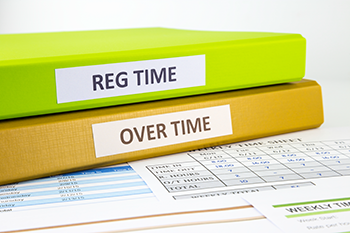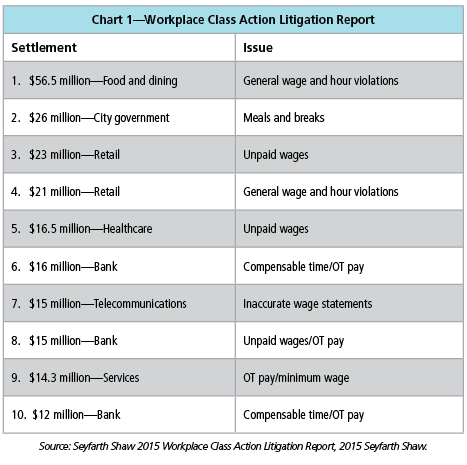 Keeping track of employee time and attendance is at the heart of your global workforce, and it’s probably the most substantial cost of your business. Knowing when, where, and how your people around the world are working is essential to gaining insight into your organization’s labor costs. High-performing global organizations know that the more you understand and control labor costs, the more profitable and competitive your organization will be.
Keeping track of employee time and attendance is at the heart of your global workforce, and it’s probably the most substantial cost of your business. Knowing when, where, and how your people around the world are working is essential to gaining insight into your organization’s labor costs. High-performing global organizations know that the more you understand and control labor costs, the more profitable and competitive your organization will be.
Essentially, time is the bottom line.
But what if your organization already has a good time and attendance solution?
You may be wondering, “What else can we do to improve our time and attendance system and make this a more intuitive and valuable function of our global business?”
This article intends to provide a strategy for achieving a high-performing time and attendance operating model that benefits your organization with a more profitable bottom line.
Find Your Problems
Your organization must understand your problems and where they are stemming from in relation to time and attendance. Typically, problems lie in one of the following areas: people, policy, process, or technology—sometimes stemming from all four.
In order to improve your organization’s time and attendance delivery, you must look at areas of opportunity like a current issue or pain point your organization is experiencing. This “look” will also provide strategic context and insight as it pertains to your organization’s time and attendance delivery.
Collaborative Ownership
Historically, time and attendance has been treated as a misfit functional practice within many organizations. It may seem straightforward that tracking employee time is an essential requirement of the business. However, a deep dive into this functional area has proven much more difficult for many organizations.
 The first step in creating a high-performing time and attendance management practice is to understand who will have inputs and outputs relative to the entire scope of time and attendance. Core business functions play a vital role in the deployment and management of time and attendance policies and systems. Developing a full spectrum of scope, involvement, and responsibilities is a leading practice typically adhered to by organizations boasting more effective time and attendance capabilities.
The first step in creating a high-performing time and attendance management practice is to understand who will have inputs and outputs relative to the entire scope of time and attendance. Core business functions play a vital role in the deployment and management of time and attendance policies and systems. Developing a full spectrum of scope, involvement, and responsibilities is a leading practice typically adhered to by organizations boasting more effective time and attendance capabilities.
Human resources is typically the go-to function for understanding employee compensation. More than likely your HR team plays a vital role in determining the policies that govern employee pay. It’s important for HR to also collaborate with internal legal counsel. Labor law, collective bargaining agreements, and other international requirements play a large role in determining employee compensation and benefits. HR’s ownership in the organization is tactical and executional in nature.
Counsel provides the insight and experience to interpret global compliance requirements and mitigate the organization’s liability. Human resources typically has a gray area of ownership of operations management. HR and operations management are responsible for the people element of your time and attendance solution. The HR/operations management team will deliver the daily functions, training, and change management of a solution.
Employees must know the process and expectations of proper timekeeping. Managers must know what is expected of them daily, monthly, etc., in regard to managing their employees’ time and attendance. In order to execute these tasks, training and change management are an integral piece of leading practice time and attendance management. HR provides the mainstay of the requirements for a time and attendance solution. Policies become the configuration requirements of the system. Processes become the end-to-end user experience and management workflow that define the day-to-day usage of the system.
Global payroll, typically seen as either an HR or finance function, also has a large portion of responsibility as it relates to time and attendance. Payroll is typically counted on to establish the employee’s correct taxability and garnishment of wages. But payroll also plays a quality assurance role in confirming employees are compensated accurately. From an internal operations and finance perspective, the payroll team typically understands the accounting structure better than most. This could be a more substantial role in organizations that have to account for labor costs internally as well as per product manufactured or goods/services delivered.
Deploying a robust global time and attendance system takes a substantial amount of technical expertise. IT represents not only the key resources to help establish the physical system but also typically provides the resources that maintain that system. Many leading organizations are deploying IT individuals with deep application expertise. Your organization may have an IT resource dedicated to maintaining your HRIS or global payroll or accounting system. Time and attendance is no different and is every bit as important of an enterprise system. Typically these individuals are trained in the time and attendance application configuration and data integration requirements of the software. They manage the application at a system and technical level.
It is crucial that the organization be aware of the importance of time and attendance. For many organizations, labor costs represent most of the operating business cost.
Time and attendance in today’s global business world is a conglomeration of several functional areas of the business. There should be an understanding of roles, and accurate employee pay should be considered a shared responsibility across the entire organization.
Part II of this article in next month’s Global Payroll will explore what a global organization can do to better define roles and responsibilities for managing time and attendance.
 Chris Thoman, PMP, has more than seven years of experience leading global enterprise workforce management initiatives. Thoman has a robust background inclusive of leading manufacturing operations and process improvement as an enterprise implementation project manager for the global leader in time and attendance technology/professional services, and as a client advocate consultant for EY. His work at the firm focuses on helping enterprise organizations develop and execute strategic workforce management initiatives, such as technology business case development, HR policy harmonization/standardization assessment and execution, and enterprise systems implementation (HRIS, time and attendance, and payroll). He has implemented 100+ clients across differing technology platforms and differing sectors.
Chris Thoman, PMP, has more than seven years of experience leading global enterprise workforce management initiatives. Thoman has a robust background inclusive of leading manufacturing operations and process improvement as an enterprise implementation project manager for the global leader in time and attendance technology/professional services, and as a client advocate consultant for EY. His work at the firm focuses on helping enterprise organizations develop and execute strategic workforce management initiatives, such as technology business case development, HR policy harmonization/standardization assessment and execution, and enterprise systems implementation (HRIS, time and attendance, and payroll). He has implemented 100+ clients across differing technology platforms and differing sectors.